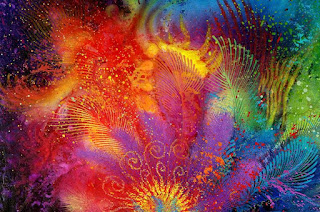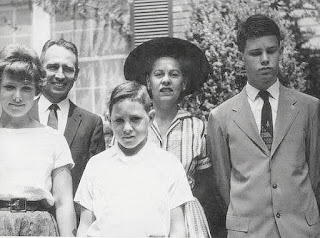Psychedelic drugs like LSD and ecstasy ingredient MDMA have been shown to stimulate the growth of new branches and connections between brain cells which could help address conditions like depression and addiction. Researchers in California have demonstrated a single dose of Dimethyltryptamine (DMT) increases the number of branch-like dendrites sprouting from nerve cells. These dendrites end at synapses where their electrical impulses are passed on to other nerve cells and underpin all brain activity. But they can atrophy and draw back in people with mental health conditions. “One of the hallmarks of depression is that the neurites in the prefrontal cortex – a key brain region that regulates emotion, mood, and anxiety – those neurites tend to shrivel up,” says Dr David Olson, who lead the research team. The research, published in the journal Cell Reports today, looked at drugs in several classes including tryptamines, DMT and magic mushrooms; amphetamines, including MDMA; and ergolines, like LSD. Source: www.independent.co.uk
“Acid can cause long-lasting or even permanent changes in a user’s psychology, and personality. Jim Morrison was one of the people that took a lot of doses. He would take four or five hits at a time. He indeed changed.” Back in New York for more shows in July 1967, Jim Morrison, the self-anointed prophet of the Summer Of Love and LSD-induced Rock, began an impossible affair with his psychic and spiritual opposite – Nico, Teutonic blonde ice-queen and co-vocalist of New York’s most celebrated yet least famous band, The Velvet Underground. According to Rock orthodoxy, The Velvet Underground and in particular Lou Reed (previous lover of Nico) seemed to despise everything The Doors stood for. When just four years later Lou Reed heard of Morrison’s death, he sneered (maybe not joking): “He died in a bathtub? How fabulous…” —Classic Rock Magazine #132 (July 2009)
On the the orbit of Jim Morrison's camp, what worthy angle is really left, at least book wise? I can think of about three: 1. Robby Krieger autobio on the saga. He doesnt have an axe to grind like John Densmore or Manzarek's psychobabble. He's the most neutral of all three Doors. 2. Babe Hill's take. Post '68, Jim more and more distanced himself day to day from The doors, yet, got much closer to Babe. His book could fill in some holes. 3. Mary Werbelow. Absolutely no one knew Jim closer from '62-'66 than Mary. It would probably be the most important book written on Jim if she decided to really go deep with it. One could argue, much of his dark side came from their break up. Interestingly enough, they were in communication even post '68. Her interview about 10 years ago may have been one of the most important sources. Pamela Courson: she has always been a mysterious figure. Central to the Morrison myth but very little real biographical information on her. I'm sure Pam had many adventures that we will probably never hear about. Pam was LA's Edie Sedgwick in some sense. She was in Mick Jagger's lap at the Hollywood Bowl show. Her friends all talk about how crazy and unpredictable she was. Jim was very chivalrous with her. In down times those demons of what was lost with Mary seemed to be a hard ghost to shake and this possibly points to why his relationship with Pam was so stormy. Even some of the peripheral characters could give some great insights into the inner workings of the group, but probably not enough for a full book unless the stories were gathered into one volume, like in Frank Lisciandro's Friends Gathered Together book. People like Lynn Krieger, who dated Morrison before she married Robby. She must have a few good Morrison stories. I'd like to read a bio on Jim done by someone who rejects all the previous forms and templates for The Doors coverage. NOHGOA (with help from an uncredited Ray Manzarek) is not good, it set up the image of Morrison as a madman (which was further "explored" in the movie). Then we have Densmore's whining about Morrison (which he conveniently revises in Unhinged), and Patricia Kennealy's farcical book (blech), and then Stephen Davis thinking if Jim was bisexual? Come on. —Kelvin Kloud from The Doors Forum
A Cosmic Mating: As his cue came up, Jim Morrison caught her eye. Pamela raised her sight from her Vanilla Coke, sipping it intertmitently. As Jim walked off the stage at the end of the set, she was waiting for him with a beer at the club stairs. "I think I love you," Morrison said. She asked "what happened here?" touching the side of his face where he still had some cuts from the debacle of the biker bar. "Critics," he joked: "What's your name?" "Pam," she replied. She was aching for a way out and shared with Jim a baggie of mushrooms. They woke up the next morning feeling raw and vulnerable. "Do you think I like being promiscuous? I love you!" Pam blurted out. Jim knew she meant it and realized she wasn't interested in looking back to her Orange County adventures. Jim caressed her hair with his trembling hands while she laid enthralled with closed eyes. Pamela laughed, amused at Jim's declaration 'I'll give you a fancy place, silk clothes and diamonds!' and kissed his half-open mouth. Jim knew he had found his cosmic mate, and didn't want to lose her. 'You are not my groupie,' said Jim in a sudden serious tone, 'you are my girl. I'd lose myself completely in your mouth, baby, your mouth is so pure.' Her body shook up at hearing all his poetic words. Her fingers, so softly tactile, explored his body, making his brain explode with an unknown, inviolable pleasure. He kissed her possesively. She tasted like Vanilla Coke and candy. 'I wanted to hold you in my arms since you laid your eyes on me at the London Fog,' she confessed, transfixed at the memory. 'Some idiots told me you were a floozy... I didn't believe them, they could never see through you,' he gently revealed. She sighed: 'Did you ask for my dating historial, Jim?' He tilted his head galllantly: 'I didn't ask anyone, you know how those guys are, braggarts or losers... you are an angel, you smell like Paradise and your eyes are lavender flowers.' She smiled, submerged in a new placidity, marveled at his poetic declamations. Her eyes were glazing over and he made love to her like an eternal promise. Her frantic strawberry tongue provoked his flowing of sweat, thick drops burning her hair and dampening her petal-rose breasts. Jim became Pamela's protector, drowning in a sea of interminable desire. As all the true love stories, Jim Morrison's unique relationship with Pam Courson was utterly misunderstood. Some insiders thought Morrison was lost, at the mercy of the mentally depressed Pam, but they were dead wrong. Jim chose Love and married Pam. Jim Morrison said that Love was the answer. —Jim, Pam and The Abyss by Sue Angeles Source: www.wattpad.com
A Cosmic Mating: As his cue came up, Jim Morrison caught her eye. Pamela raised her sight from her Vanilla Coke, sipping it intertmitently. As Jim walked off the stage at the end of the set, she was waiting for him with a beer at the club stairs. "I think I love you," Morrison said. She asked "what happened here?" touching the side of his face where he still had some cuts from the debacle of the biker bar. "Critics," he joked: "What's your name?" "Pam," she replied. She was aching for a way out and shared with Jim a baggie of mushrooms. They woke up the next morning feeling raw and vulnerable. "Do you think I like being promiscuous? I love you!" Pam blurted out. Jim knew she meant it and realized she wasn't interested in looking back to her Orange County adventures. Jim caressed her hair with his trembling hands while she laid enthralled with closed eyes. Pamela laughed, amused at Jim's declaration 'I'll give you a fancy place, silk clothes and diamonds!' and kissed his half-open mouth. Jim knew he had found his cosmic mate, and didn't want to lose her. 'You are not my groupie,' said Jim in a sudden serious tone, 'you are my girl. I'd lose myself completely in your mouth, baby, your mouth is so pure.' Her body shook up at hearing all his poetic words. Her fingers, so softly tactile, explored his body, making his brain explode with an unknown, inviolable pleasure. He kissed her possesively. She tasted like Vanilla Coke and candy. 'I wanted to hold you in my arms since you laid your eyes on me at the London Fog,' she confessed, transfixed at the memory. 'Some idiots told me you were a floozy... I didn't believe them, they could never see through you,' he gently revealed. She sighed: 'Did you ask for my dating historial, Jim?' He tilted his head galllantly: 'I didn't ask anyone, you know how those guys are, braggarts or losers... you are an angel, you smell like Paradise and your eyes are lavender flowers.' She smiled, submerged in a new placidity, marveled at his poetic declamations. Her eyes were glazing over and he made love to her like an eternal promise. Her frantic strawberry tongue provoked his flowing of sweat, thick drops burning her hair and dampening her petal-rose breasts. Jim became Pamela's protector, drowning in a sea of interminable desire. As all the true love stories, Jim Morrison's unique relationship with Pam Courson was utterly misunderstood. Some insiders thought Morrison was lost, at the mercy of the mentally depressed Pam, but they were dead wrong. Jim chose Love and married Pam. Jim Morrison said that Love was the answer. —Jim, Pam and The Abyss by Sue Angeles Source: www.wattpad.com






















































